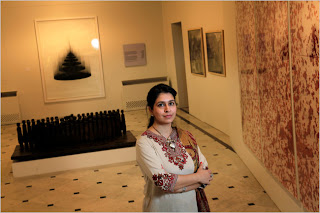A question that arose for me over the course of the discussion was one of translation, specifically, about how we can think through the process of translation within the context of the visual arts. How do objects translate from one medium to another and affect ways of seeing, as in the case of Google's translation of 3D objects into a digital format for mass dissemination, or in the case of Pahari painters translating motifs of linear perspective that they picked up from Mughal artists? How do content, metaphors, and ideas translate into works of art, as in the case of contemporary Indian artists or in the case of the translation of the paradise (walled garden) form into various cultural contexts via trade and conquest? And finally, how do performance and textual traditions like that of the Ramayana translate into visual objects? What aspect of the translation is given precedence? What is missing and what might that tell us about how people valued certain narratives or characters in the story?
The afternoon concluded with an excellent artist talk by Naiza Khan, and a lively discussion about the direction of contemporary Pakistani art.




